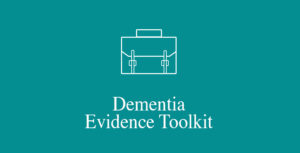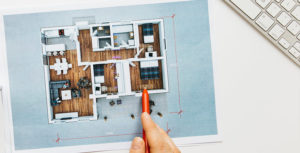
Dementia Evidence Toolkit
Dementia Evidence Toolkit is a comprehensive free web tool providing easy access to research evidence on dementia care and treatment.

The design of a building can change the way we engage and interact, move around, and even our mood.
This is particularly so for a person living with dementia. We know there is a clear link between design and what people living with dementia do.
A well-designed environment will reduce agitation, anxiety, conflict, confusion, depression, falls, restlessness, stress associated with bathing, reliance on physical help, wandering and use of psychotropic drugs.
It will improve way finding, eating behaviour, motor function, independence in dressing, ease of supervision, pleasure, mobility, activities of daily living, self-help, toilet use and interactions.
At DTA we have worked with many organisations to create dementia-friendly environments through our Designing for People with Dementia service. We see the new Aged Care Quality Standards, which represent a clear shift towards autonomy for older Australians, as a great opportunity for this work to really gain some traction and momentum.
Standard 5 goes to the heart of why environment is so important in aged care, stating that organisations must provide “a safe and comfortable service environment that promotes the consumer’s independence, function and employment.”
Our design principles can guide organisations in responding to this standard.
A safe environment, for example, is one that unobtrusively reduces risk (principle 1). A comfortable environment provides a human scale (principle 2), is familiar (principle 7), manages stimulation (principles 4 and 5) and provides a variety of places to be alone or with others (principle 8).
Consumer independence, function and employment are also addressed in the design principles.
A good place to start, to assess a building on its strengths and weaknesses for people living with dementia, is our free BEAT-D App.
At DTA we are guided by a salutogenic approach, which focusses on factors that support health and wellbeing, and enable a person living with dementia to live the fullest life they possibly can. Through our environmental design work we’ve seen so many changes in peoples’ lives resulting from changes in the environment. From simple changes that help a person recognise which is their bedroom, to larger-scale changes such as play equipment in residential care which increases family visits and cross-generational interaction.
There is a now, thankfully, a growing understanding that the environment is a key resource staff have at their disposal as they support older people. Staff will always be the key, but trained staff who know how to use an environment to deliver quality care, is what will change older people’s lives the most.
It’s great to see this recognised in the new standards.
Share
Tags

Dementia Evidence Toolkit is a comprehensive free web tool providing easy access to research evidence on dementia care and treatment.

Breaking through the no time for training barrier is the major driver behind the development of Dementia Training Australia’s new, cutting edge Responsive Behaviours (RB)...